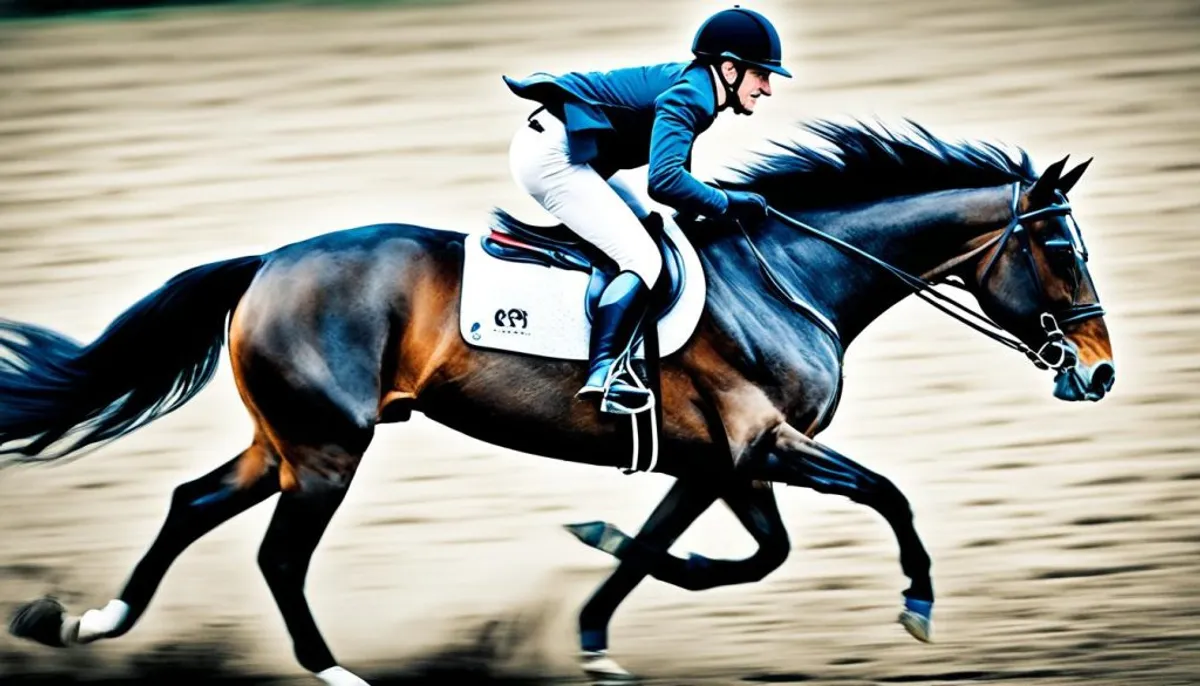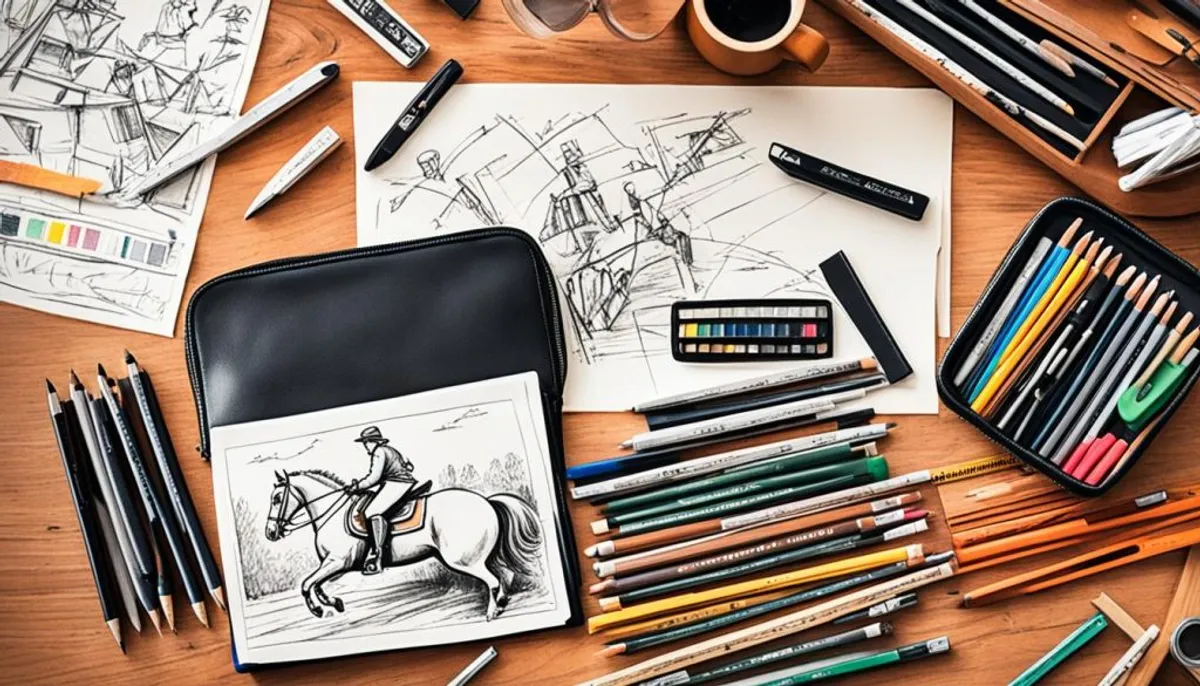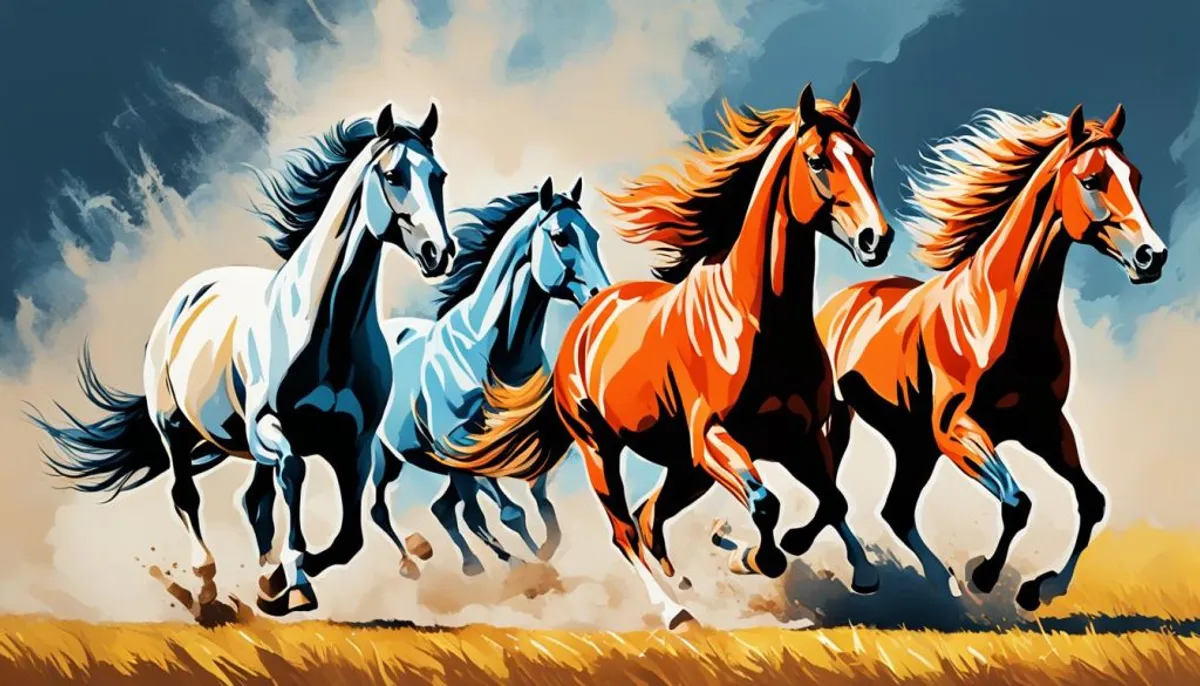Discover the secrets of equestrian drawing. It’s an exciting art that showcases the beauty of horses. Whether you are already skilled or a beginner, you will find techniques and inspiration here. They are essential for drawing equestrianism.
Dive into a creative world. Pencils become tools to capture the beauty of the equine world. You will see your paper fill with masterpieces. They will reflect the power and grace of horses and riders.

Key Ideas to Remember
- Discover the basic techniques of equestrian drawing
- Learn to capture the anatomical structure and movements of the horse
- Find inspiration in the most popular equestrian subjects
- Develop a unique style to express your passion for equestrianism
- Master the mediums and materials for quality equestrian illustrations
Introduction to the Art of Equestrian Drawing
Many artists love equestrian drawing, including Stéphanie Latour. She has been drawing horses since she was very young. For her, it’s a way to capture the magic of these animals. Her unique style combines equestrian art with equestrian illustrations.
Passion for Horses and Drawing
At 4 years old, Stéphanie Latour began to sketch the horses she saw. She was drawn to their beauty and strength. Over the years, her love for drawing horses has grown. It has become her favorite expression to show her connection with these majestic animals.
The Importance of Equestrian Drawing in Art
Equestrian drawing is crucial in art. It allows artists to show the true nature of horses. Whether through equestrian sketches or equestrian illustrations, this form of art speaks to many. It introduces us to the world of horses, captivating lovers of these animals.
Through her creations, Stéphanie Latour wants to share her passion with everyone. She offers an exciting vision of horses in all their aspects. Her work shows how beautiful and meaningful equestrian art is.
Basic Equipment and Materials
For drawing horses, choosing your materials is crucial. Whether you are a novice or an expert, having the right tools is essential. You need to use the right equestrian drawing techniques and have the proper equestrian drawing materials to accurately represent the magnificence of horses.
Pencils, Papers, and Other Materials
Graphite pencils are essential for drawing horses. They are perfect for highlighting the shadows and details of horses. Make sure to have pencils of different hardness to draw with precision.
The paper used also plays an important role. Choose a paper with a fine grain, such as Canson or Arches paper. This will help you create beautiful equestrian drawings. Test different formats to see which one suits you best.
- Graphite pencils (2H to 6B)
- Quality paper (Canson, Arches)
- Eraser
- Sharpener
- Fixative to protect your drawings
In addition to pencils and paper, have an eraser, a sharpener, and a fixative. These basic tools will complete your kit. You will be ready to draw all the beauty of horses.

Equestrian Drawing Techniques
Drawing horses accurately requires understanding their anatomy. Experts, like Stéphanie Latour, use equestrian drawing techniques. They showcase the details and expressions of horses.
Anatomy and Structure of the Horse
Studying the anatomy of the horse is key to drawing horses realistically. You learn to draw their head, limbs, muscles, and bones. This way, artists can accurately depict the form and movements of horses on paper.
Rendering Textures and Colors
Rendering textures and colors is essential for drawing the true horse. Artists use methods like hatching and shading to show the softness of the coat and the shine of the mane.
By learning these techniques, artists can create drawings that showcase the beauty and strength of each horse.
Inspirations and Popular Subjects
Artists have often been inspired by horses in their art. Notably, famous figures like Leonardo da Vinci explored this subject. His detailed studies of horses, focusing on their movements, have been very influential.
Later, in the grand century, equestrian portraits reached a new level. The manes of the horses seemed to fly, and their tails moved energetically. These portraits showcased the beautiful intensity of horses in motion.
Horses in Motion and Action
Artists love to draw horses in motion. It’s a challenge but also a great source of creativity. Works that depict horses in action are highly valued in the art world.
To draw these moments of strength, knowing the anatomy of the horse is crucial. Artists must also be familiar with colors and textures. This allows for a realistic effect and captures all the energy of these majestic animals.

| Drawing Horses in Motion | Dynamic Equestrian Illustrations |
|---|---|
| Detailed representation of horse movements and anatomy | Capturing the energy and vitality of horses in action |
| Focus on the accuracy of proportions and joints | Use of dynamic poses and perspectives |
| Aiming for a realistic and naturalistic rendering | Highlighting the expression and character of horses |
Equestrian Drawing: The Art of Capturing the Equine Essence
The horse has always inspired artists. Its power and size fascinate. Throughout the ages, equestrian art has evolved. It ranges from wild horses to baroque portraits.
Artists like Stéphanie Latour or Anne Piola know how to capture the very essence of the horse. They use various techniques to do so.
Drawing horses requires a good understanding of their body and behavior. Artists must show how they move and express themselves. This demands precision on paper.
Equestrian artists want to show the true nature of horses. Their strength, grace, and elegance are important. They use pencils, paints, and more to capture this.
Equestrian art is diverse. Some artists show the abstract and powerful side of horses. Others focus on their emotions. Each does it in their own way.
Whether you are a beginner or already an artist, equestrian drawing is exciting. It allows you to capture the essence of horses in your own way. You will develop your artistic talents and your love for these animals.
Conclusion
Drawing horses is an exciting art. It allows you to showcase their beauty, grace, and strength. This guide has shown you the basics to the most original ideas of this unique art. No matter if you are starting or have been drawing for a while, discover the mixed art of illustration and horses.
Equestrian drawing techniques teach you the anatomy and structure of the horse. Additionally, they show how to draw their textures and colors. Inspirations for equestrian drawing offer a variety of subjects, from horses in motion to vibrant equestrian scenes.
This guide has provided you with everything you need to improve your art or discover it. Always explore, be creative, and appreciate the art of drawing horses. It is the key to capturing their magnificence on paper.
FAQ
What are the basic equipment and materials for equestrian drawing?
To draw horses, you need pencils, quality paper, erasers, and felt-tip pens. Pastels and watercolor are also useful. Having several tools is crucial for accurately representing horses.
How to master the anatomy and structure of the horse in drawing?
To draw horses correctly, study their anatomy. This includes the shape of their head, body, and legs. Making detailed sketches will help you better understand their structure.
What are the main techniques for rendering textures and colors in equestrian drawing?
To bring horses to life on paper, use techniques like blending and hatching. Washes are also important. Playing with colors, shadows, and highlights helps showcase their beauty.
What are the popular subjects and inspirations in equestrian drawing?
Horses in action are very popular. Artists also enjoy drawing riders and competitions. All these scenes offer plenty of inspiration.
How do artists like Stéphanie Latour manage to capture the very essence of the horse in their works?
Talented artists, like Stéphanie Latour, have a deep understanding of drawing techniques and horse anatomy. Their passion for these animals shines through in their realistic works, showcasing their strength and grace.
RelatedRelated articles



